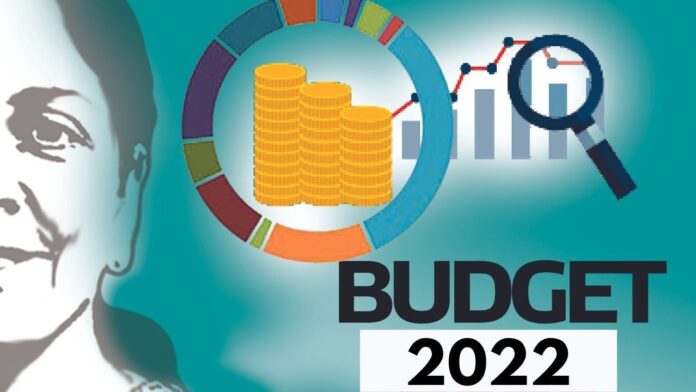Mr Motilal Oswal, MD & CEO, Motilal Oswal Financial Services
“The writing was there on the wall. Any sudden and sharp fiscal consolidation steps announced could have throttled the nascent and uneven recovery of the Indian Economy. A 6.9pct fiscal deficit target alleviates that pain. The successive waves of the pandemic have made it more difficult to reduce government debt as a share of GDP in the medium term. The budget has focused on boosting overall demand though and has invested more in infrastructure.
Hence as I see it, we are in high growth, high inflation environment. The budget is behind us and now 9th februrary’22 become relevant. The commentary around RBI raising rates in its coming meeting would be that much more relevant. Having said that, in my opinion, equity markets in India are likely to see 20000 on the nifty and about 65000 in SENSEX by December 2022 on the back of 15-20 per cent earnings growth in FY23. The journey, however, is likely to be very volatile. Markets will test patience on the downside as markets adjust to higher risk premiums on the back of an impending increase in interest rates, both globally and locally. The Indian rupee is likely to depreciate which could see FII selling, particularly those names where private equity holding is high (Read consumer tech and other self-proclaimed tech companies). Sectors like infrastructure , real estate , industrials , financials ,Information technology and pharmaceuticals are likely to outperform while consumer staples and discretionary likely to underperform”.
2. Mr. Arvind Hali, MD & CEO, Motilal Oswal Housing Finance
The Budget 2022-23 announced today is Bold & Non-Populist One, in the election bound year, with focus on long term development of the country.
Good news of record GST mopping of 1.41 Lakh Crore in January 2022, preceded the Budget commentary, hinting at sharp revival of economy post Covid impact. In continuance Budget projected GDP growth rate of 9.2% with fiscal deficit of 6.9% while 35%+ rise in CapEx, which is a clear indicator of using the fiscal space to augment spending.
Though the budget lacked any new and direct initiative to augment housing development and housing finance, the Finance Minister overlaid that 50% of India will live in cities by the year 2047. Thus the GOI retained the focus on Housing development for poor through allocation of Rs. 48 K Crore towards completion of 80 Lakh houses in FY23 and identification of 60 K Houses as PMAY beneficiaries. Housing Finance related tax sops and affordable housing schemes have remained un-tinkered.
On the other hand the infrastructure development aimed through Gati Shakti project shall provide indirect impetus to housing in the less privileged areas. The GOI announced to bring in ease in implementation of building bye laws along with the state governments for reduction in time required for all land and construction related approvals and for promoting affordable housing for middle class and Economically Weaker Sections in urban areas. Allocation of Rs. 60 K Crore to cover 3.8 Cr households for tap water connection is yet another step towards development of quality living in India.
In this vast housing development, aimed in the budget, lies the scope of HFCs and Lenders to play their role in housing inclusion of India. The GOI announced to work with the financial sector regulators to expand access to capital along with reduction in cost of intermediation.
Overall, Budget FY23 is an optimistic new age budget driven on technology and digitization for long term, high-growth, sustainable path.
3. Mr. Prateek Pant, Chief Business Officer, WhiteOak Capital Asset Management
The Union Budget has something for every sector. Likewise, the government announced the creation of a thematic fund for sunrise sectors. The supportive policy actions will help provide funding for these important sectors of tomorrow. Market borrowing through green bonds for mobilizing resources for green Infrastructure is also a welcome step.
The decision on dense charging infra and swappable batteries will help drive growth in data centers and energy storage systems. The PLI scheme for design-led manufacturing will help build a strong ecosystem for 5G networks.
On the other hand, higher allocations towards social infra under the flagship government schemes will spur consumption. The budget was most pragmatic with an ECLGS for contact intensive sectors like hospitality which were badly affected due to the pandemic.
4. Mr. Vaibhav Agrawal, CIO & Founder, Teji Mandi
“With capex target of 7.5 lac crores, and incentives and announcements across several different industries, government is clearly looking to revive growth in the economy. Government also focusing on giving achievable numbers and making budget more transparent. Sectors likely to benefit would be banking, infrastructure and manufacturing exports. Furthermore, with buoyancy of tax revenues, government has extended capex support for states to Rs. 1 lac crore. This budget has covered a vast array of stakeholders. Focus will now be on budget fine print and execution of all the points made in the budget speech.”
5. Mr. Deepak Chandnani, Executive Chairman Designate, Worldline South Asia & Middle East
We continue to witness government’s mega push towards digitalisation across all key sectors including health, education, fintech, startup, payments among others in this budget announcement. The proposal to launch Central Bank Digital Currency and introducing 75 Digital Banking Units that will be set up in 75 districts of the country by Scheduled Commercial Banks will bring more users under the digital ambit, especially in the rural pockets. The continuation of financial support announced in the previous budget for digital payments is a big positive as it will continue to deepen the adoption of digital payments across the country and promote use of economical and user-friendly platforms.
6. Mr. Vikash Khandelwal, CEO, Eqaro Guarantees
The Surety Insurance sector could not have asked for a better start to the year. The IRDA released the final guidelines in January. The FM today announced in the budget that the Surety bonds will replace the traditional bank guarantees applicable for government projects. This addresses the issue of acceptance of surety bonds. Reforms in public procurement & timely payments are other big positives. All these steps will help improve the health of the infra sector.
The emergency Credit Line Guarantee, for additional credit to MSME, extended till March 2023 with a guarantee cover of Rs 5 lakh cr will help revive MSMEs. The major thrust of the budget being infra and extra spending announced will help the broader economy. The Indian economy cannot bounce back to double-digit growth without the infra sector doing well. The surety insurance sector will play an active and key role in providing a boost to the infra sector.
7. Mr. Nish Bhatt, Founder & CEO, Millwood Kane International
The government has spelled out its priorities very clear. The higher capex and thrust on infra are required to keep the growth rate high. Though there may be some concerns on a higher deficit, that is entirely for the development of key infra projects. The Make in India thrust along with a focus on infra will create the required number of new jobs for various age brackets.
Rs 48,000 cr allocation to build 80 lakh affordable homes is a big booster for the real estate sector. The focus on EV charging infra and urban planning will complement real estate further.


































